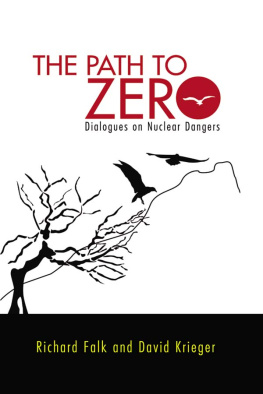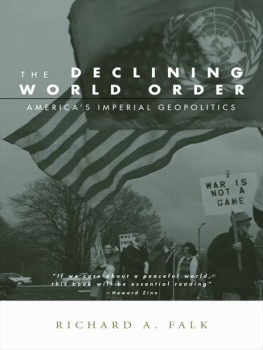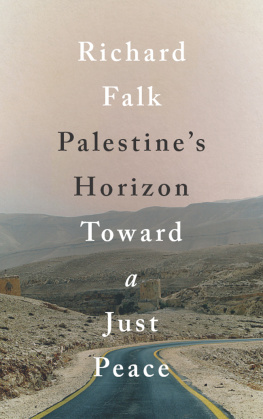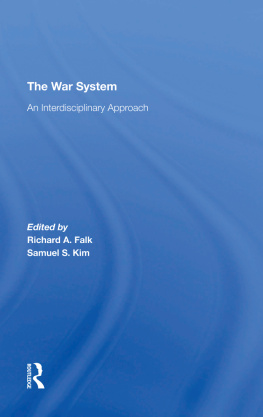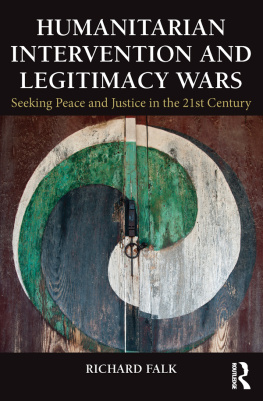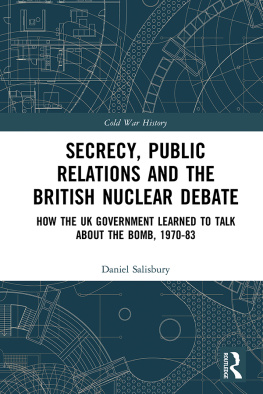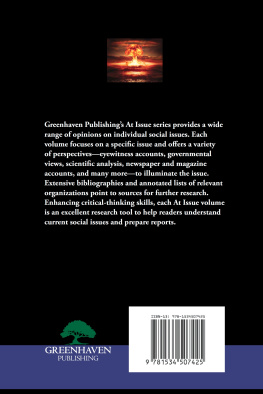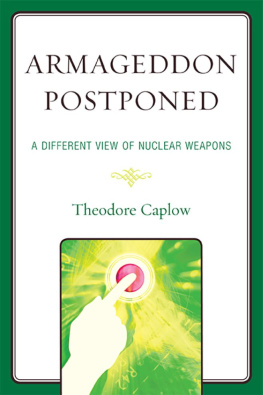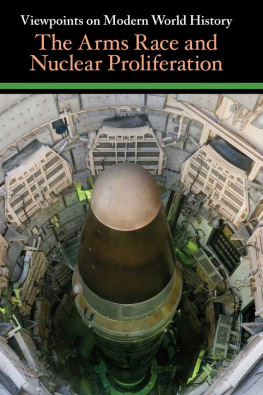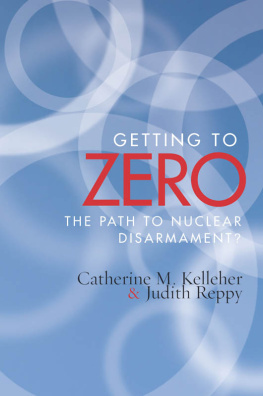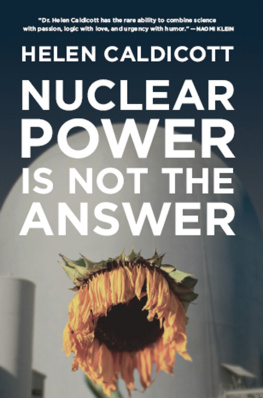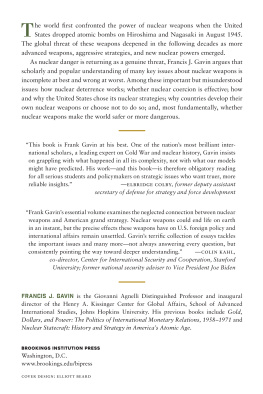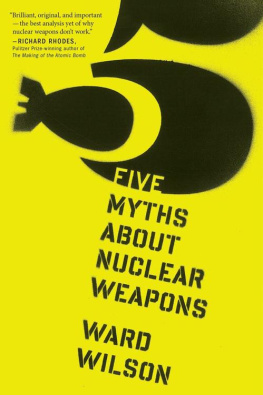THE PATH TO ZERO
THE PATH TO
ZERO
Dialogues on
Nuclear Dangers
RICHARD FALK &
DAVID KRIEGER
First published 2012 by Paradigm Publishers
Published 2016 by Routledge
2 Park Square, Milton Park, Abingdon, Oxon OX14 4RN
711 Third Avenue, New York, NY 10017, USA
Routledge is an imprint of the Taylor & Francis Group, an informa business
Copyright 2012, Taylor & Francis.
All rights reserved. No part of this book may be reprinted or reproduced or utilised in any form or by any electronic, mechanical, or other means, now known or hereafter invented, including photocopying and recording, or in any information storage or retrieval system, without permission in writing from the publishers.
Notice:
Product or corporate names may be trademarks or registered trademarks, and are used only for identification and explanation without intent to infringe.
Falk, Richard A.
The path to zero: dialogues on nuclear dangers / by Richard Falk and David Krieger.
p. cm.
Includes index.
ISBN 978-1-61205-214-4 (pbk.: alk. paper) 1. Nuclear nonproliferation. 2. Nuclear disarmament. 3. Nuclear arms control. I. Krieger, David, 1942
II. Title.
JZ5675.F35 2012
327.1747dc23
2011048268
ISBN 13 : 978-1-61205-213-7 (hbk)
ISBN 13: 978-1-61205-214-4 (pbk)
Designed and typeset in Adobe Caslon by Straight Creek Bookmakers.
Dedicated to
Sarah, Matthew, and Juliet
Ryan, Eric, Zachary, Andrew, Alyse, Nat, Addie, and Alice
And the children of the future
Contents
We thank the pioneers in seeking a world free of nuclear weapons, including Albert Camus, John Hersey, Albert Einstein, Joseph Rotblat, Bertrand Russell, E. P. Thompson, Albert Schweitzer, Kenzaburo Oe, Norman Cousins, Robert Jay Lifton, Jonathan Schell, James Yamazaki, Daniel Ellsberg, and Helen Caldicott for their illuminating writings and activities exhibiting understanding, conscience, commitment, and courage.
We thank also the hibakusha, the survivors of Hiroshima and Nagasaki, for their forgiveness, firmness, and perseverance in insisting that no one else on the planet should suffer their fate.
We extend our deep appreciation to our many colleagues who work for a world without nuclear weapons. Among these, we would mention particularly the board, advisors, associates, and staff of the Nuclear Age Peace Foundation, a dedicated group, many of whom have been our ongoing partners in dialogue.
Our special appreciation to Carol Warner for her help in preparing the manuscript for publication and for her helpful suggestions, and to Jennifer Knerr at Paradigm Publishers for her enthusiastic engagement with the entire substantive and editorial process of producing our book on an accelerated schedule.
We thank Plato for his seminal dialogues and all those seekers of truth and justice over the centuries who have kept the art of dialogue alive.
We also thank our wives, Hilal and Carolee, for the long continuity of their love and encouragement.
It is our hope that those who read this book will act on these issues, which are certain to affect the lives of countless future generations and could constrain and even foreclose them. It is in this spirit of an engaged concern for the future that we dedicate this book to our grandchildren.
The views expressed in these dialogues have been developed through our relations over many decades with colleagues near and far. They represent, however, our personal perspectives and not those of any of our institutional affiliations. We hope that these dialogues will be a stimulus to greater action toward achieving a world without nuclear weapons.
These documents can be accessed on the Paradigm Publishers Web page for The Path to Zero, available at http://www.paradigmpublishers.com/Books/BookDetail.aspx?productID=298814
Ban Ki-moon. The United Nations and security in a nuclear-weapon-free world. Address to the East West Institute, New York, October 24, 2008. http://www.un.org/apps/news/infocus/sgspeeches/search_full.asp?statID=351
Green, Robert. Breaking Free from Nuclear Deterrence. Santa Barbara: Nuclear Age Peace Foundation, Tenth Annual Frank K. Kelly Lecture on Humanitys Future, 2011. http://wagingpeace.org/menu/programs/public-events/frank-kelly-lecture/10th-annual-lecture/kelly_lecture_2011.pdf
Legality of the Threat or Use of Nuclear Weapons. Advisory Opinion of the International Court of Justice, The Hague, July 8, 1996. http://www.icj-cij.org/docket/index.php?pl=3&p2=4&k=e1&p3=4&case=95
McCloy-Zorin Accords. Joint Statement of Agreed Principles for Disarmament Negotiations, signed on September 20, 1961, unanimously adopted by the United Nations General Assembly on December 20, 1961. http://nuclearfiles.org/menu/key-issues/nuclear-weapons/issues/arms-control-disarmament/mccloy-zorin-accords_1961-09-20.htm
Model Nuclear Weapons Convention. Convention on the Prohibition of the Development, Testing, Production, Stockpiling, Transfer, Use and Threat of Use of Nuclear weapons and on Their Elimination, April 2007. United Nations General Assembly A/62/650, January 18, 2008. http://inesap.org/sites/default/files/inesap_old/mNWC_2007_Unversion_English_N0821377.pdf
Obama, Barack. Remarks of President Barack Obama, Hradcany Square, Prague, Czech Republic, April 5, 2009. http://prague.usembassy.gov/obama.html
Rotblat, Joseph. Remember Your Humanity. Nobel Lecture, Oslo, Norway, December 10, 1995. http://www.nobelprize.org/nobel_prizes/peace/laureates/1995/rotblat-lecture.html
Russell-Einstein Manifesto, issued in London, July 9, 1955. http://www.pugwash.org/about/manifesto.htm
Santa Barbara Declaration. Reject Nuclear Deterrence: An Urgent Call to Action, Santa Barbara, CA, February 17, 2011. http://www.wagingpeace.org/articles/db_article.php?article_id=209
Treaty on the Non-Proliferation of Nuclear Weapons, entered into force on March 5, 1970. http://www.state.gov/www/global/arms/treaties/nptl.htm1#2
Vancouver Declaration. Laws Imperative for the Urgent Achievement of a Nuclear-Weapon-Free World, Vancouver, Canada, March 23, 2011. http://www.lcnp.org/wcourt/Feb2011VancouverConference/declarationmediarelease.pdf
Nuclear weapons are not currently a subject of intense public discussion and debate, but they should be. They are weapons that define an era, the Nuclear Age, and they define it by their immense and unprecedented power of destruction. Nuclear weapons are the result of scientific discoveries that opened the door to the splitting of heavy atoms and, with thermonuclear weapons, to even greater releases of power by the fusion of light atoms. The scientific discoveries and engineering feats that created nuclear weapons prior to and during the World War II Manhattan Project were only the beginning of an era in which the future of the human species and most life on earth would be put in danger of annihilation.
The questions for humankind are: How will we respond to these immensely powerful weapons? Are we capable of eliminating their threat? Can civilization make the leap to survival in a world with thousands of nuclear weapons? Will humankind become the victim of its own cleverness? These are daunting questions, not to be swept aside or trivialized.

